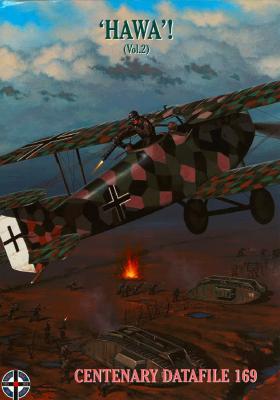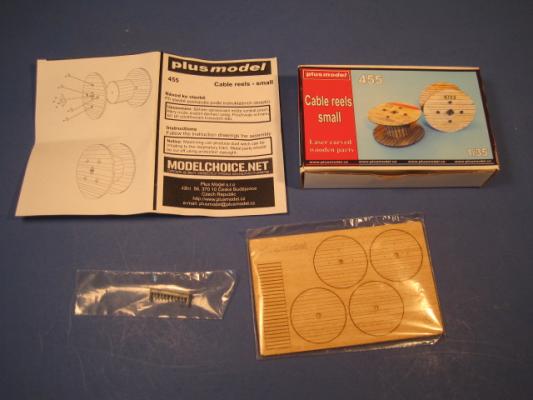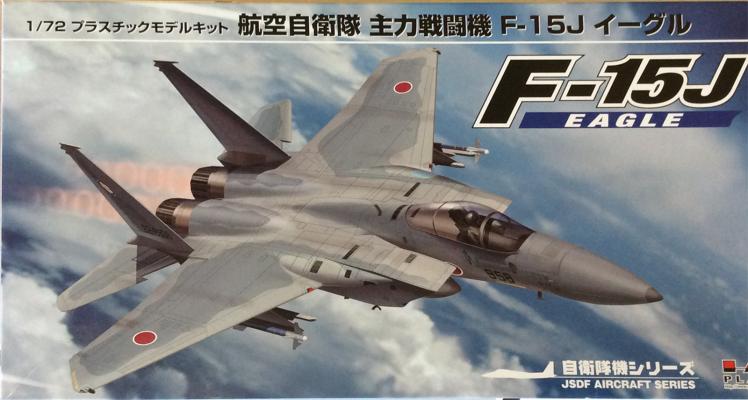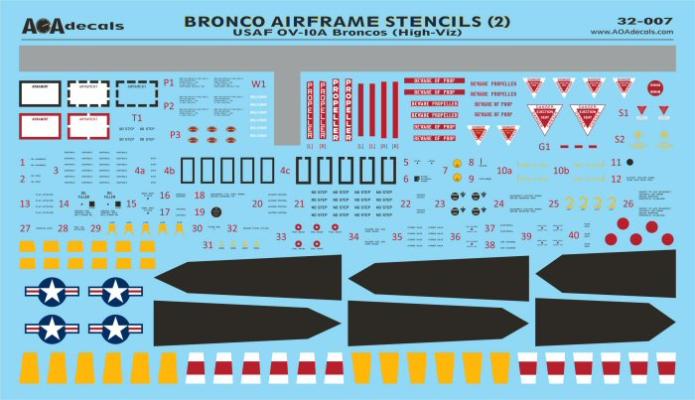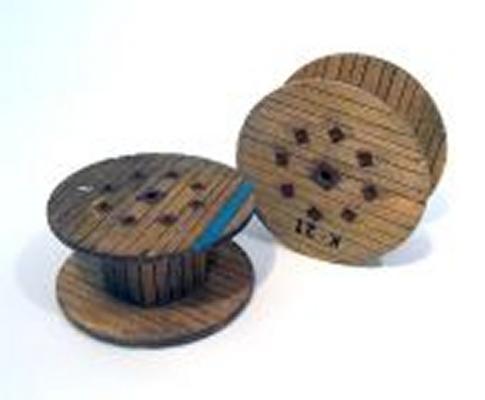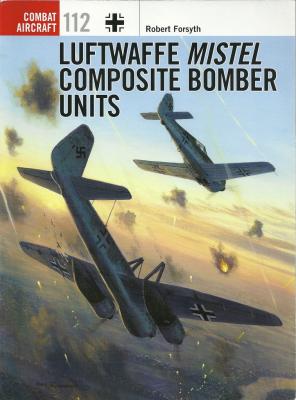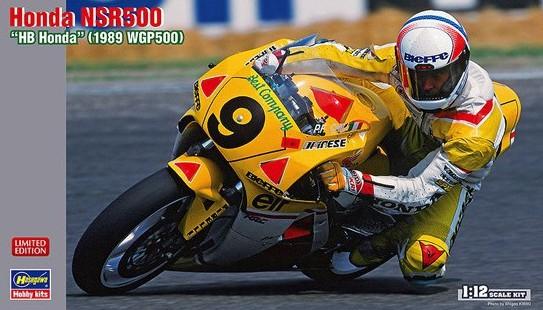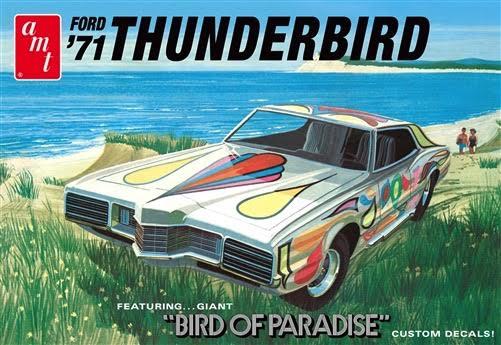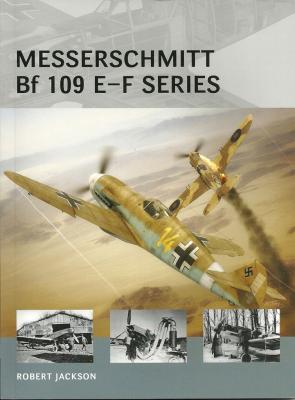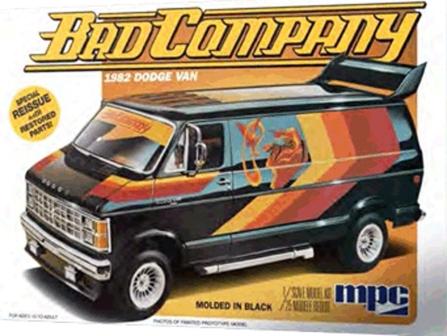Ray Rimell’s follow up to ‘Hawa’! Volume 1 dives deeper into the Hannover CL. II and its variants. The cover features a Stan Stokes painting of a Hannover in action over the front lines. Ronny Bar contributes nine color side profiles, all up to his normal high standards. Mick Davis grabs the pullout centerfold with general arrangement line drawings of the Hannover CL.IIIa and the Hannover CL. III (Merc.). For those of you that still dabble in that odd 1/72 scale, Mick Davis also provides you with drawings of the same two aircraft. I counted seven color photos of the 180-hp Opel (Argus) motor located at the Science Museum in London. There are also an additional 54 black and white photos and over 150 drawings of the airplane components. Ian Stair provides a 1/48 general arrangement drawing of the Hannover CL. V along with fuselage sections and a few detail drawings.
What's New
Plusmodel has recently released some interesting 1/35th scale diorama accessories. The Cable Reels – Small are just some of them.
They arrived in a sturdy cardboard container and wrapped in heat sealed plastic. There was no damage to the parts. Parts consisted of wood, fiber board, heavy paper and resin.
Read the instruction sheet before removing the laser etch wooden parts. They suggest that you take tape and tape the inner reel wooden slats together. These parts are not attached to each other and this is highly recommended if not vital to construction.
Once the wooden parts were separated from their carrier a little sanding with an emery board was all that was needed for cleanup.
Background
The F-15 emerged from a design study started in the early 1960s called the FX program. When the missile centered American designs of the late 1940s and 50s proved vulnerable to seemingly less advanced Soviet Migs over Vietnam, and after the unveiling of the Mig 25, the U.S. started a concentrated effort to build the next generation of fighters. Centered around the energy maneuverability theory the new designs would have very high thrust to weight ratios. That’s what the F-15 (and F-14, F-16 and F-18) would eventually achieve. Built around two Pratt and Whitney F-100 engines that allow the aircraft to accelerate in the vertical, the F-15 and associated new generation U.S. fighters outclassed any opposition at the time. In 1976 a specially prepared F-15 called the Streak Eagle broke eight time to climb records previously held by the Mig 25. A year prior the Japanese Self Defense Force came looking for a replacement for their F-104 and F-4s.
AoA (Angle of Attack) decals: New on the block, and focusing on Marine Air … We sincerely appreciate this new decal manufacturer sending IPMS/USA their latest releases for review! (…and the usual sincere appreciation also to IPMS USA Reviewer corps leadership for sending these my way.. )
This sheet is a comprehensive delivery providing stencil markings for USAF OV-10A’s; from their website, here’s what is on the sheet:
“This sheet provides complete OV-10A Bronco airframe stencils for one aircraft in the original USAF blue-grey FAC camouflage scheme.
Optional one piece wing walkway decal
Plus Models has recently release some interesting 1/35th scale diorama accessories. The Cable Reels – Big are just some of them.
They arrived in a sturdy cardboard container and wrapped in heat sealed plastic. There was no damage to the parts. Parts consisted of wood, fiber board, heavy paper and resin.
Read the instruction sheet before removing the laser etch wooded parts. They suggest that you take tape and tape the inner reel wooded slats together. These parts are not attached to each other and this is highly recommended if not vital to construction.
Once the wooded parts were separated from their carrier a little sanding with an emery board was all that was needed for cleanup.
Osprey Publishing continues to expand its Combat Aircraft line of books. This time with the title Luftwaffe Mistel Composite Bomber Units.
This book, like all the other in the series, is very well researched and profusely illustrated with period pictures. Where relevant, it includes pictures of different pilots (including a few allied pilots) whose diaries and exploits are covered in the book.
The different chapters of the book covers the history of the Mistel units in a chronological way, from its beginning as a way to deliver gliders (rather than towing them it was considered to have a composite Bf-109/DFS 230) and its transition to an offensive weapon via the delivery of a modified war-weary bomber airframe.
Team Honda put together an impressive stream of innovative and successful racing bikes in the late eighties and through the nineties. This kit represents the Honda NSR 500 ridden by Pierfrancesco Chili to a sixth place finish in the 1989 WGP500 race.
This kit is presented in a throw-back to 1971 complete with period packaging.
Molded in white, it can be built with a detailed motor or with a promo-style motor plate option, features include wild psychedelic decals, a few custom pieces and a miniature display kit box. Skill Level 2. The manufacturer claims that the kit is supposed to include pad printed slicks, however my review kit sample did not include those items.
The Kit
This kit was originally offered as an annual kit and as a “dealer promo” style kit back in the day. Due to this design parameter the front and rear fascia’s are pretty well detailed, however the body engraving is soft in spots, the engine, interior and chassis is somewhat simplified therefore parts count is lower than our modern and newly engineered kits . For instance the front lower portion of the grille and rear splash pan is molded to the chassis.
Osprey Publishing continues to expand its fledging line of “Air Vanguard” titles, with the installment of Messerschmitt Bf 109E-F series.
Like most books of this series, it starts with a brief introduction to the aircraft in question and it quickly delves into the details of the first model, the –E series. It covers the topic in good detail, explaining different subvariants (E-1 to E-8, plus /B and /Z versions) and it also includes the production figures of each subtype.
The next section of the book covers the evolution of the –E into the –F (perhaps the nicest looking 109 of them all) explaining in good detail the wing, engine, cowling, propeller spinner and tail re-enforcements that made this series substantially better than its predecessor.
Through most of the seventies and early eighties custom vans were all the rage! This kit takes you instantly back to that magical era when shag carpet, eight tracks and incense were commonplace.

